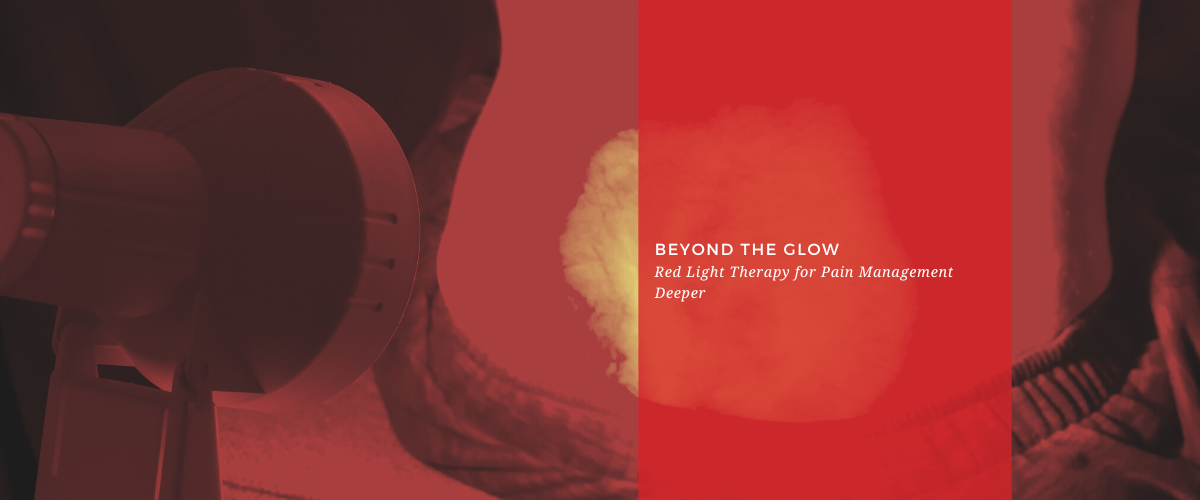With over 1 million orders

Beyond the Glow: Red Light Therapy for Pain Management
Red light therapy (RLT) is commonly associated with skincare benefits. But apparently, its perks stretch well beyond just giving users glowing skin. Recent research suggests it has the potential to aid in pain management. For individuals constantly battling chronic pain, this could offer a new avenue of relief and hope.
What is Red Light Therapy for Pain Management?
Red Light Therapy (RLT) is an innovative treatment that harnesses the healing potential of specific light wavelengths. The procedure involves directing controlled amounts of red or near-infrared light to targeted areas of the body, specifically within the wavelength range of 600 to 1,100 nanometers. This ensures the light penetrates the skin to a depth that provides therapeutic benefits. What sets RLT apart is its gentle, non-invasive nature. Unlike some other treatments that might be uncomfortable, RLT offers a soothing experience, all while ensuring there's no emission of heat, UV rays, or radiation.
How Does RLT Work?

- Cellular Energy Boost: At its core, RLT aids in the production of adenosine triphosphate (ATP) in cells, which is essentially the energy currency of life. This boosts cell function, promoting healing and rejuvenation.
- Increased Circulation: RLT helps dilate local blood vessels, increasing circulation and bringing more oxygen and nutrients to the targeted area.
- Reduced Inflammation: By promoting healthy cell function and increasing circulation, RLT can help reduce inflammation, a primary source of many types of pain.
RLT for Pain Management: The Evidence
Red Light Therapy (RLT) has been a topic of ongoing research in the medical community, especially concerning its potential benefits in pain management. While the evidence is still accumulating and more studies are required to establish definitive conclusions, some promising findings have emerged.

Arthritis
Patients suffering from conditions like osteoarthritis and rheumatoid arthritis have participated in studies involving RLT treatments.
Preliminary Findings: Many of these patients reported experiencing reduced joint pain and stiffness after undergoing RLT sessions. However, it's crucial to consider the broader context and acknowledge that while some patients have benefited, the overall impact and long-term benefits of RLT in arthritis management are still under investigation.
Muscle Recovery
The fitness community, including athletes and workout enthusiasts, has shown interest in RLT for post-exercise recovery.
Preliminary Findings: Some individuals have noted faster recovery times and diminished muscle pain after exercise when incorporating RLT into their routines. Yet, it's worth noting that the extent and consistency of these benefits across larger populations are still subjects of research.
Neuropathy
Neuropathy, especially conditions like diabetic neuropathy, represents another area where RLT's potential benefits have been explored.
Preliminary Findings: Initial studies indicate that RLT might play a role in alleviating pain associated with neuropathic conditions. However, as with the other areas, more comprehensive research is needed to determine the scope and reliability of these effects.
Advantages Over Other Pain Management Techniques
Red Light Therapy (RLT) offers several advantages when compared to other pain management methods:
- Non-Invasive: RLT doesn't involve any surgical procedures. This means there's no need to break the skin, resulting in zero recovery time. It's a straightforward approach that many patients appreciate for its simplicity and comfort.
- Drug-Free: One of the significant concerns with some pain management techniques is the reliance on medications, which can sometimes lead to addiction or have other side effects. RLT provides a drug-free option, offering pain relief without the challenges that medications can pose.
- Versatility: One of the standout features of RLT is its adaptability. Whether it's back pain, joint pain, or muscle soreness, RLT can be used on different parts of the body. This flexibility makes it a preferred choice for many who want a versatile treatment method.
Considering RLT for Pain Management?
Keep the following in mind:
- Consultation: Before diving in, consult with a healthcare provider to determine if RLT is suitable for your specific condition.
- Treatment Duration: While some might feel relief after a single session, others might need multiple treatments for optimal results.
- Maintenance: Just like physical therapy or massage, consistent sessions might be required to maintain pain relief.
The Future of RLT and Pain Management
As technology advances and more research is conducted in this field, it's likely we'll see an expansion in the use of RLT for pain management. Given its non-invasive nature and its potential to reduce reliance on pain medications, RLT might just be the bright future many chronic pain sufferers have been waiting for.
If you’re interested in exploring other non-invasive therapies alongside RLT, such as compression therapy, be sure to check out Dr. Arthritis best-sellers for effective solutions.
SHOP NOW
For more information on red light therapy, check out our other articles below:
Shining a Light on Wellness: The Benefits of Red Light Therapy
